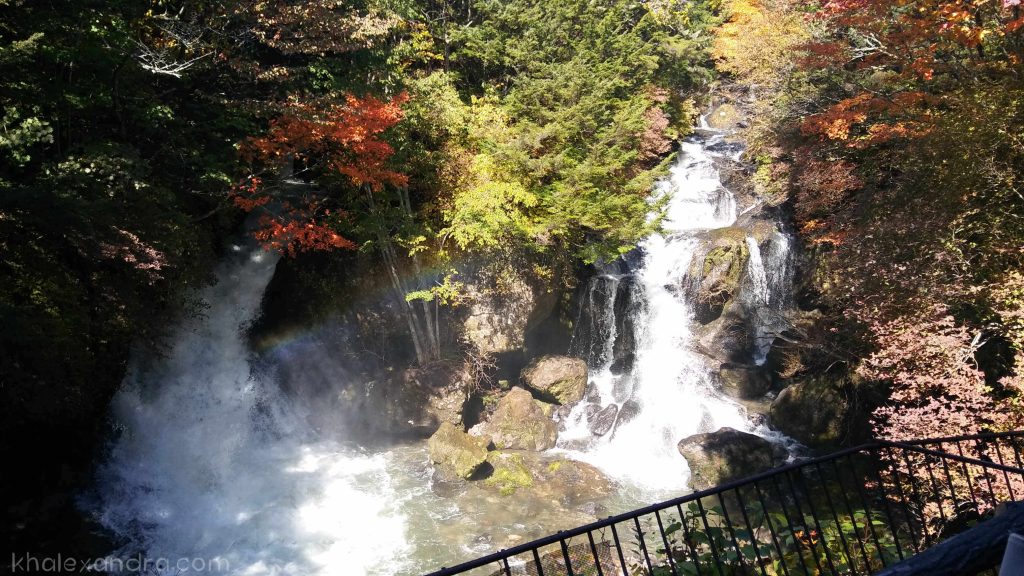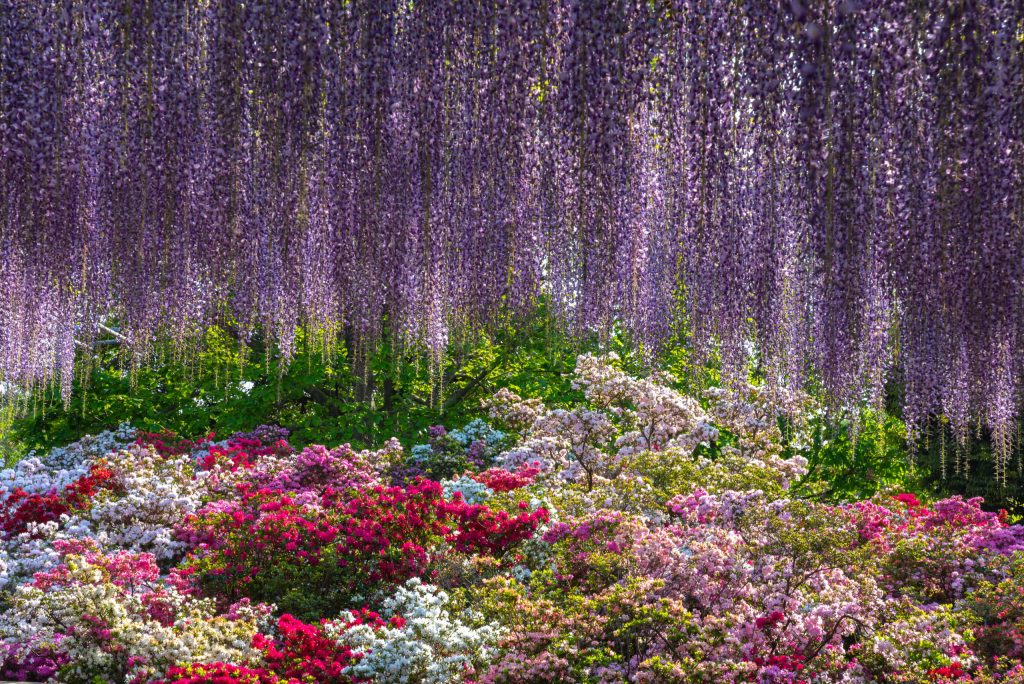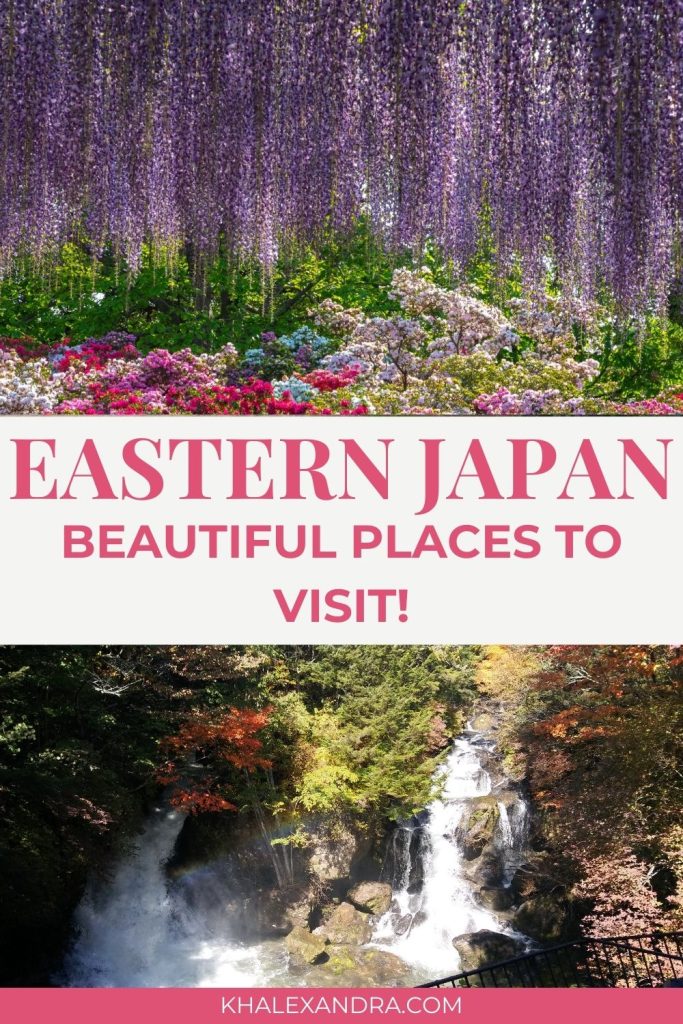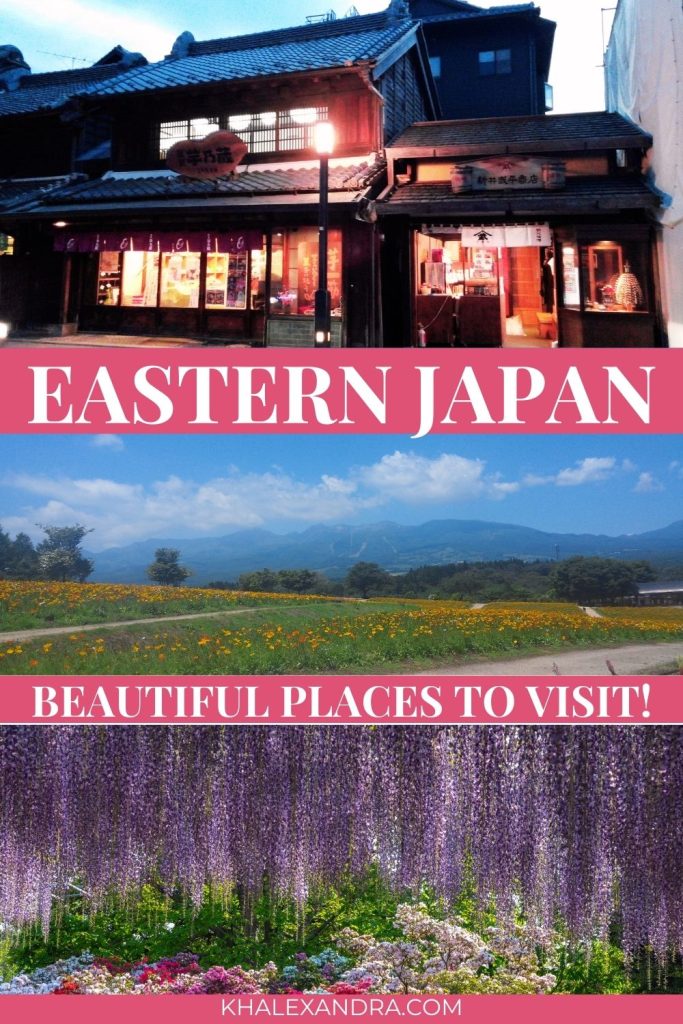Beautiful Places to Travel in Eastern Japan
This post may contain affiliate links, which means I'll receive a small commission if you purchase through my links, at no extra cost to you. Please read full disclosure for more information. Your support is appreciated!.
The great thing about travel in Japan is that most places are just a train ride from the airport in Tokyo. Both airports in Tokyo (Haneda and Narita) have train systems which are easily navigable if you are prepared. The people are friendly and willing to help as well.
Tokyo
Tokyo is considered Eastern Japan, and if you like the excitement of city life, there are many things to do in Tokyo. Actually, it is considered one of the safest cities in the world to live.
One very popular activity is to look at Tokyo from above. There are many less crowded and cheaper alternatives to Tokyo Tower. One option is the Tokyo Metropolitan Government Building located at 45F, 2-8-1 Nishi-Shinjuku, Shinjuku-ku, Tokyo. Not only was this a free option, there is a lovely gift shop in addition to the amazing view. See the schedule here.

There are many leisurely activities in Tokyo, one being the many animal cafes, like the owl cafe pictured below.
The owl cafes require a reserved spot so as not to be overcrowded, so it is suggested to book ahead. That way you can enjoy your time with the owls without being rushed. Most of these cafes serve hot and cold drinks, but not all of them. You are allowed to take as many pictures with the owls as you like but leave the flash off.

To be honest, there are many different cafes in Tokyo, so if owls are not your fancy, you can find something else. (There are also cat cafes in Tokyo, not to mention hobby cafes and character cafes).

Japan Unlimited wifi & SIM Card Rental CDJapan Rental
Parks
Because nature is such a revered part of Japanese culture, there are beautiful parks within Tokyo as well, where you can escape the busy street and enjoy the flowers and trees.

Even small cities without much claim to fame boast peaceful and beautiful parks like the one pictured below in a small town in Tochigi Prefecture, north of Tokyo.

Tochigi Prefecture
Tochigi prefecture in eastern Japan is full of beautiful areas, and Tochigi is recommended if you want to avoid bigger crowds. Please do your own research before traveling as schedules are subject to change.

Utsunomiya is the main hub in Tochigi prefecture. Above is the Utsunomiya train station platform. Buying a ticket in Utsunomiya is very easy, you can do so by yourself at a kiosk. Or for personal help, there is an office behind glass walls where you can buy a ticket from an actual person.
Nasu

This is a touristed mountain area in Tochigi, with parks as well as onsens. If you aren’t familiar with onsens, they are hot springs where one can take a bath. Yes, these are real bath houses where you must take all clothing off, but the men and women are strictly separated. (North of Nasu there is an onsen where men and women can bath together with towels on, so I’ve heard). In cities, the public bath houses are called “sento” but the difference between a sento and and onsen is the water they use (sentos use city water and onsens a natural volcanic spring water). Both are refreshing and pleasant for a night out.
Nasu can be reminiscent of the beautiful mountains of Switzerland!
Pictured is the flower park within Nasu in springtime.

Nikko National Park

A UNESCO world heritage site, Nikko National Park in Tochigi Prefecture is particularly beautiful in Autumn!
Getting there:
Take the train from Tokyo to Utsunomiya (a hub for Tochigi Prefecture). From Utsunomiya, take a JR train to Tobu-Nikko Station. This takes about 43 minutes and there are 5 stops in between. Alternately, Keikyu Airport Limousine runs busses straight to Nikko from Narita or Haneda airports.
Once at Tobu-Nikko Station, a Tobu bus offers transportation to the best sites around the park. The schedule can be found here: Tobu Busses, Nikko
At the time of the writing of this post, Senjōgahara Free pass at Nikko station will take you as far as Senjōgahara Marshland. This is an unlimited 2- day bus ride pass, going between Nikko and Senjōgahara observation deck at Sanbonmatsu bus stop 40. Senjōgahara Free pass costs 2650 yen at Tobu Nikko Station. Another pass will take you all the way to Yumoto Onsen (bus stop 46), for 3000 yen.
Some of the highlights:
Senjōgahara Marshland

A marshland teeming with forest, wild plants and birds. Sanbonmatsu bus stop 40, the observation deck for Senjōgahara Marshland, takes around 50 minutes from Tobu Nikko Station. To hike the Senjōgahara Plateau Nature Trail, you will need to take Yumoto Onsen bus stop 46 or Ryūzu No Taki bus stop 37. The entire Plateau Nature Trail takes around 2.5 – 3 hours to hike.
Odashirogahara Marshland
Full of unique grasses and marshland (red and yellow in Autumn), Akanuma bus stop 39 will take you to Odashirogahara Marshland (20 minute walk). This bus stop joins with Senjōgahara Plateau Trail.
Ryūzu Falls (Ryūzu No Taki)

A lovely waterfall with a restaurant and shop. Ryūzu No Taki bus stop 37.
Lake Chūzenji

Chūzenji is a beautiful volcanic lake near the town of Nikko. Stop at Chūzenji Onsen bus stop 26 for a 5 minute walk to the lake.
Kegon Waterfall (Kegon No Taki)

Also, at Chūzenji Onsen bus stop 26 is Kegon waterfall, a nearly 100 meter tall waterfall. Akechidaira is a free viewing platform, and there is a paid elevator to view the waterfall from the base. There are also some shops and restaurants around the Akechidaira Observatory Platform.
Shinkyo bridge
I was not able to stop here, but this may be worth seeing on your way back. There is a bus stop here to get back to Nikko Station, or you can walk from the bridge back to the station, which will take you about 30 minutes.

You never know what kind of delicacies and souvenirs you might find on your walk back! Pictured is a chestnut cake, popular in the Autumn season.
Ashikaga Flower Park

Ashikaga Flower Park is very famous for the beautiful wisteria vines. At different times of year, there are purple, white, yellow, and pale red wisteria, and in winter, there are Christmas lights at dusk! After trying for years to nurture a wisteria vine in Ohio, I appreciate the 100+ year old wisteria at Ashikaga Flower Park even more!
To get there is pretty straightforward, you can find directions on their website, but to make it more simple, here is a short breakdown:
Once you get to Utsunomiya Train Station, take a JR ticket to Oyama station. It should take around 26 minutes. However, please consult the train schedule here as it may be subject to change.
At Oyama station, take a JR ticket straight to Ashikaga Flower Park Station. (The flower park now has it’s own station)! From Oyama it should take another 35 minutes.
(Alternately, you could take the Tobu train from Utsunomiya to Tochigi Station [around 38 minutes] and then JR train to Ashikaga Flower Park [24 minutes].)
Check out the park here.
Kawagoe, or “Little Edo” (Ko-Edo)
Kawagoe is a picturesque 18th century Edo town with Kashiya Yokocho or candy alley (a street full of candy shops)! It is actually in Saitama Prefecture, just above Tokyo and below Tochigi. Tokyo was once called Edo, and during the Edo period, Kawagoe was an important hub of trade.

To get to Kawagoe is easy by train:
- To get to Kawagoe, from north or south, you must go to Omiya. Omiya is easy enough to reach by train from Tokyo.
- If coming from Tochigi in the north, take a JR ticket to Omiya station in Saitama prefecture from Utsunomiya. (As of the date of this post, Omiya will be the 17th stop from Utsunomiya).
- In Omiya, take a JR ticket to Kawagoe station.
Happy Traveling in Eastern Japan!



